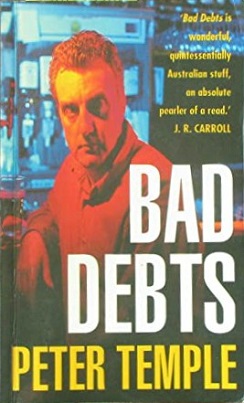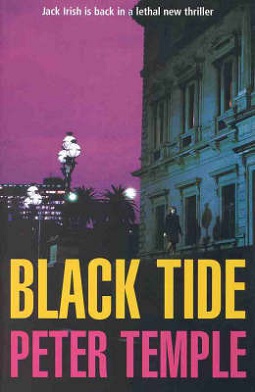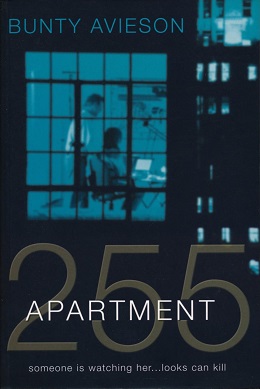
Detective fiction is a subgenre of crime fiction and mystery fiction in which an investigator or a detective—whether professional, amateur or retired—investigates a crime, often murder. The detective genre began around the same time as speculative fiction and other genre fiction in the mid-nineteenth century and has remained extremely popular, particularly in novels. Some of the most famous heroes of detective fiction include C. Auguste Dupin, Sherlock Holmes, and Hercule Poirot. Juvenile stories featuring The Hardy Boys, Nancy Drew, and The Boxcar Children have also remained in print for several decades.

Crime fiction, detective story, murder mystery, mystery novel, and police novel are terms used to describe narratives that centre on criminal acts and especially on the investigation, either by an amateur or a professional detective, of a crime, often a murder. It is usually distinguished from mainstream fiction and other genres such as historical fiction or science fiction, but the boundaries are indistinct. Crime fiction has multiple subgenres, including detective fiction, courtroom drama, hard-boiled fiction, and legal thrillers. Most crime drama focuses on crime investigation and does not feature the courtroom. Suspense and mystery are key elements that are nearly ubiquitous to the genre.

The historical mystery or historical whodunit is a subgenre of two literary genres, historical fiction and mystery fiction. These works are set in a time period considered historical from the author's perspective, and the central plot involves the solving of a mystery or crime. Though works combining these genres have existed since at least the early 20th century, many credit Ellis Peters's Cadfael Chronicles (1977–1994) for popularizing what would become known as the historical mystery. The increasing popularity and prevalence of this type of fiction in subsequent decades has spawned a distinct subgenre recognized by the publishing industry and libraries. Publishers Weekly noted in 2010 of the genre, "The past decade has seen an explosion in both quantity and quality. Never before have so many historical mysteries been published, by so many gifted writers, and covering such a wide range of times and places." Editor Keith Kahla concurs, "From a small group of writers with a very specialized audience, the historical mystery has become a critically acclaimed, award-winning genre with a toehold on the New York Times bestseller list."

Garth Richard Nix is an Australian writer who specialises in children's and young adult fantasy novels, notably the Old Kingdom, Seventh Tower and Keys to the Kingdom series. He has frequently been asked if his name is a pseudonym, to which he has responded, "I guess people ask me because it sounds like the perfect name for a writer of fantasy. However, it is my real name."

Damien Francis Broderick is an Australian science fiction and popular science writer and editor of some 74 books. His science fiction novel The Dreaming Dragons (1980) introduced the trope of the generation time machine, his The Judas Mandala (1982) contains the first appearance of the term "virtual reality" in science fiction, and his 1997 popular science book The Spike was the first to investigate the technological singularity in detail.
The police procedural, police show, or police crime drama, is a subgenre of procedural drama and detective fiction that emphasizes the investigative procedure of police officers, police detectives, or law enforcement agencies as the protagonists, as contrasted with other genres that focus on non-police investigators such as private investigators.
Cecil John Charles Street, who was known to his colleagues, family and friends as John Street, began his military career as an artillery officer in the British Army. During the course of World War I, he became a propagandist for MI7, in which role he held the rank of Major. After the armistice, he alternated between Dublin and London during the Irish War of Independence as Information Officer for Dublin Castle, working closely with Lionel Curtis. He later earned his living as a prolific writer of detective novels.

Peter Temple was an Australian crime fiction writer, mainly known for his Jack Irish novel series. He won several awards for his writing, including the Gold Dagger in 2007, the first for an Australian. He was also an international magazine and newspaper journalist and editor.
The Australian Literature Society Gold Medal is awarded annually by the Association for the Study of Australian Literature for "an outstanding literary work in the preceding calendar year." From 1928 to 1974 it was awarded by the Australian Literature Society, then from 1983 by the Association for the Study of Australian Literature, when the two organisations were merged.

Kerry Isabelle Greenwood is an Australian author and lawyer. She has written many plays and books, most notably a string of historical detective novels centred on the character of Phryne Fisher, which was adapted as the popular television series Miss Fisher's Murder Mysteries. She writes mysteries, science-fiction, historical fiction, children's stories, and plays. Greenwood earned the Australian women's crime fiction Davitt Award in 2002 for her young adult novel The Three-Pronged Dagger.

Bad Debts (1996) is a Ned Kelly Award-winning novel by Australian author Peter Temple. This is the first novel in the author's Jack Irish series.

Black Tide (1999) is a crime novel by Australian author Peter Temple. This is the second novel in the author's Jack Irish series.

John Dale is an Australian author of crime fiction and true crime books. He completed a Doctorate of Creative Arts at the University of Technology Sydney, in 1999, and subsequently joined the UTS writing Program where he was Professor of Writing and Director of the UTS Centre for New Writing until 2020.

Apartment 255 is a 2001 Ned Kelly Award-winning novel by the Australian author Bunty Avieson.
Peter Robert Corris was an Australian academic, historian, journalist and a novelist of historical and crime fiction. As crime fiction writer, he was described as "the Godfather of contemporary Australian crime-writing", particularly for his Cliff Hardy novels.

The Mystery of a Hansom Cab is a mystery fiction novel by the Australian writer Fergus Hume. The book was first published in Australia in 1886. Set in Melbourne, the story focuses on the investigation of a homicide involving a body discovered in a hansom cab, as well as an exploration into the social class divide in the city. The book was successful in Australia, selling 100,000 copies in the first two print runs. It was then published in Britain and the United States, and went on to sell over half a million copies worldwide, outselling the first of Arthur Conan Doyle's Sherlock Holmes novels, A Study in Scarlet (1887).

Smoke and Mirrors is 2008 crime novel by Australian author Kel Robertson. It won the 2009 Ned Kelly Award for Best Fiction. It is the second novel in the author's series about Australian Chinese Federal Police detective Brad Chen.

The Wooden Leg of Inspector Anders (1999) is a crime novel by Australian author Marshall Browne. It won the 2000 Ned Kelly Award for Best First Novel.
The Barrakee Mystery (1929) is a novel by Australian writer Arthur Upfield. It was the second of the author's novels, his first crime novel and the first to feature his recurring character Detective Inspector Napoleon 'Bony' Bonaparte. It was originally published in the UK by Hutchinson in 1929, and subsequently serialised in The Herald in Melbourne in 42 daily instalments between 23 July and 9 September 1932.
The Bone is Pointed (1938) is a novel by Australian writer Arthur Upfield. It was the sixth of the author's novels to feature his recurring character Detective Inspector Napoleon 'Bony' Bonaparte. It was originally published in the Australia by Angus & Robertson in 1938, and subsequently serialised in The Herald newspaper in Melbourne between September and November 1938, under the title Murder on the Station.













